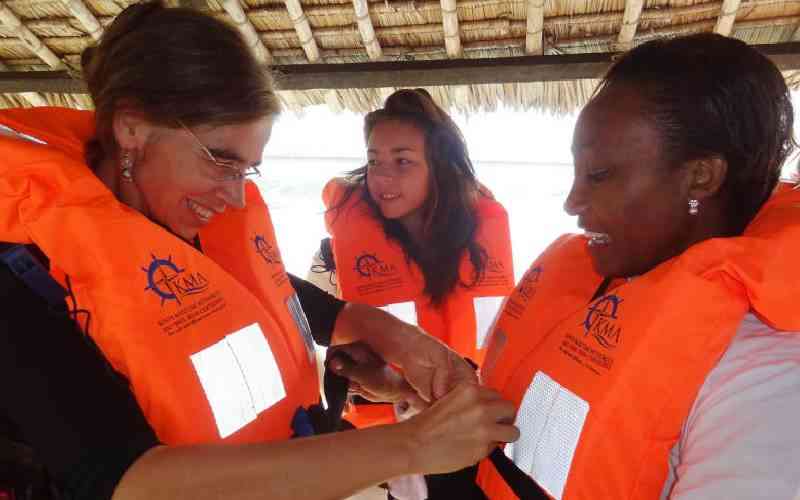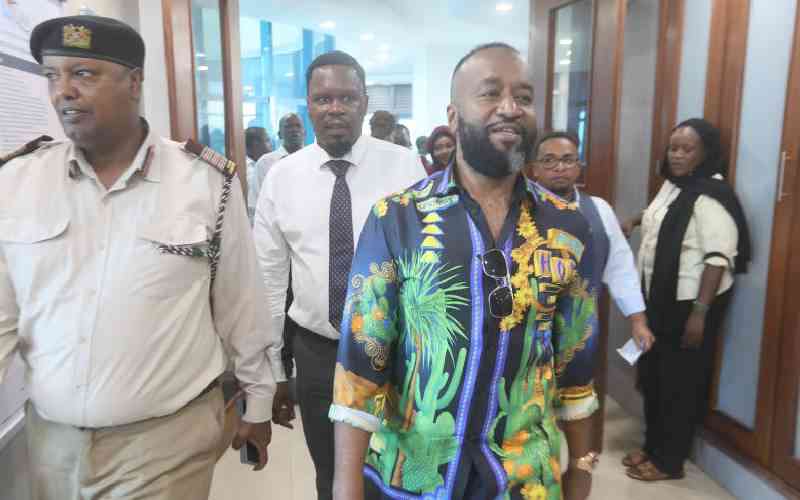By PATRICK BEJA
KENYA: Despite risks posed by archaic sea navigation methods, boat operators within the Lamu archipelago are resisting efforts by the Kenya Maritime Authority (KMA) to introduce modern safety regulations to cut down maritime accidents.
The boat operators make a living ferrying visitors and residents within the archipelago for a fee but this business is fraught with fatal accidents. Seven people died after two vessels collided at night in 2012. It has been noted that collision of boats has been rampant which called for strict safety rules.
The Government has maintained that coxswains have to fix navigation lights on their vessels and passengers including children should wear life jackets for safety.
Supplies to islands
In Lamu County, boats ferry people including patients between the Lamu island headquarters and mainland as well as to Manda airport on Manda island and several other islands in Lamu East District. They also transport foodstuffs and other supplies on the islands.
But operators of the more than 500 registered boats have refused to use 350 free navigational lights given by government to enhance marine safety raising concerns over safety.
During festivities and closure or opening of schools, officers from KMA have a rough time enforcing safety rules at the Lamu jetty.
KMA vessel inspector Simon Gichohi recently led several staff from as early as 7am to enforce the ‘rules of the road’ as locals and visitors thronged the Lamu island for festivities. “We are working with the Kenya maritime police to ensure all safety rules are strictly observed. We distributed 350 navigation lights last year to improve visibility at night but boat operators have not been using them,”
Mr Gichohi said at the jetty. He said no boat was allowed to the Lamu or Mokowe jetties without passengers wearing life jackets.
“KMA is now constructing an office in Lamu to step up enforcement of the safety rules for boats,” Gichohi says.
The office along the Lamu seafront road is expected to be opened this year to enable KMA make a strong presence in the county which has a vibrant water transport system in the country.
A seasoned boat operator Mr Faraj Ali claims they were not consulted on the rules and blamed this for the resistance to embrace the safety measures.
“The kind of navigation lights supplied by KMA are not suitable for speedboats. They are for docking because they confuse our coxswains while sailing. The coxswains see better in darkness. That is why we want dialogue and practical lessons, “ Ali argues.
The boat operators also argue that life jackets should be worn only when there is an alert of a possible accident at sea and not when passengers board the vessels.
Stay informed. Subscribe to our newsletter
Life jackets
He argues that even passengers using Likoni ferries in Mombasa county do not put on life jackets or clinch to life rafts “If our captains are forced to put on jackets they cannot swim and rescue passengers in case of an accident. For hygienic reasons sharing of jackets by passengers can cause skin diseases,” he argues. It is not logical
for young children to also put on life jackets, he says.
At the same time, the boat operators say the business was no longer profitable because they have to buy a life jacket at Sh4,000, spare parts and petrol which goes for Sh150 a litre.
Travel advisories
“Since the travel advisories were slapped on Lamu following al Shabaab threats on visitors, business has gone down because there are no tourists to ferry to the islands to the east. There is also the fear of low boat business when the Lamu County headquarters is relocated to Mokowe mainland,” Ali says.
Lamu Boat Association chairman Awadh Hassan Awadh admits that his members have been resisting the new rules although the association officials have been helping to arbitrate.
“There has been conflict here. Passengers do not want to co-operate by putting on life jackets while coxswains sometimes differ with the state officials over navigation lights,” Awadh explains..
He says speedboat operators still maintain that the navigation lights offered by KMA are too bright and are only suitable for ‘parking the vessels at the jetties’’
and prefer using torches instead.
“The problem is that KMA did not consult us before issuing the navigation lights and boat operators have not been willing to use them. They have kept the free navigation lights in their homes,” Awadh adds.
He says the association was however working closely with KMA, Kenya maritime police and Kenya Ports Authority (KPA) which operates with the Lamu jetty to improve security.
“We are issuing badges to our members in an effort to improve security. KPA has offered us spotlights at the jetty to enhance security at night,” he says.
In the recent annual Lamu cultural festival, boats ferried more than 30,000 people to the event.
Lamu KPA jetty superintendent Mahmoud Ali said there were more than 500 registered boats that operate at the KPA jetty.
They include more than 80 speedboats, 25 cargo boats and six floating leisure boats that serve as hotels. “We are working closely with Kenya maritime police and KMA to ensure orderly boat operations,” Mahmoud says.
Senior Kenya Red Cross Society volunteer in Lamu Mr Salim Mbarak supports the enforcement of navigation lights and jackets rule saying it will improve safety at sea.
He said the archipelago was prone to sea accidents and that was why his organisation is always on alert to respond to any emergencies.
“We have trained our staff on sea rescue and we have a standby boat for rescue operations. We participated in the 8pm boat collision incident that claimed seven people and other incidents. But I think the rules will minimise such accidents,” Mbarak says.
Boats are the lifeline in Lamu as they provide the link between islands to the east and the mainland to the heart of the county on Lamu island.
On January 1, 2012, seven passengers died while 15 were rescued when two boats collided at Wiyoni between Mokowe mainland and Lamu jetty on the island as they sailed at night forcing government to enforce the safety measures.
A passenger boat hit another ferrying fuel for power generation on the island.
KMA has put up posters at the Lamu KPA jetty to raise awareness on marine safety.
 The Standard Group Plc is a
multi-media organization with investments in media platforms spanning newspaper
print operations, television, radio broadcasting, digital and online services. The
Standard Group is recognized as a leading multi-media house in Kenya with a key
influence in matters of national and international interest.
The Standard Group Plc is a
multi-media organization with investments in media platforms spanning newspaper
print operations, television, radio broadcasting, digital and online services. The
Standard Group is recognized as a leading multi-media house in Kenya with a key
influence in matters of national and international interest.
 The Standard Group Plc is a
multi-media organization with investments in media platforms spanning newspaper
print operations, television, radio broadcasting, digital and online services. The
Standard Group is recognized as a leading multi-media house in Kenya with a key
influence in matters of national and international interest.
The Standard Group Plc is a
multi-media organization with investments in media platforms spanning newspaper
print operations, television, radio broadcasting, digital and online services. The
Standard Group is recognized as a leading multi-media house in Kenya with a key
influence in matters of national and international interest.









